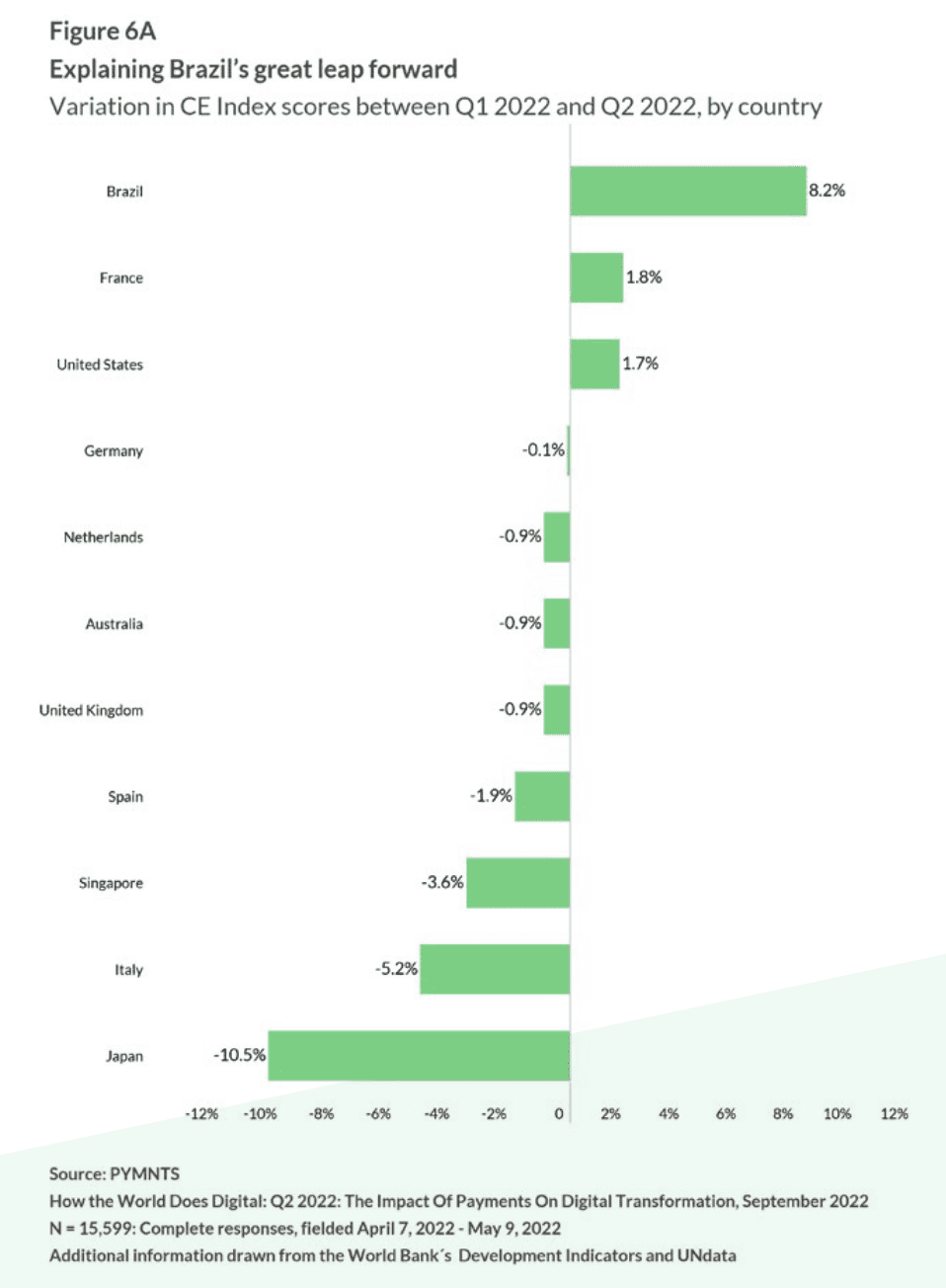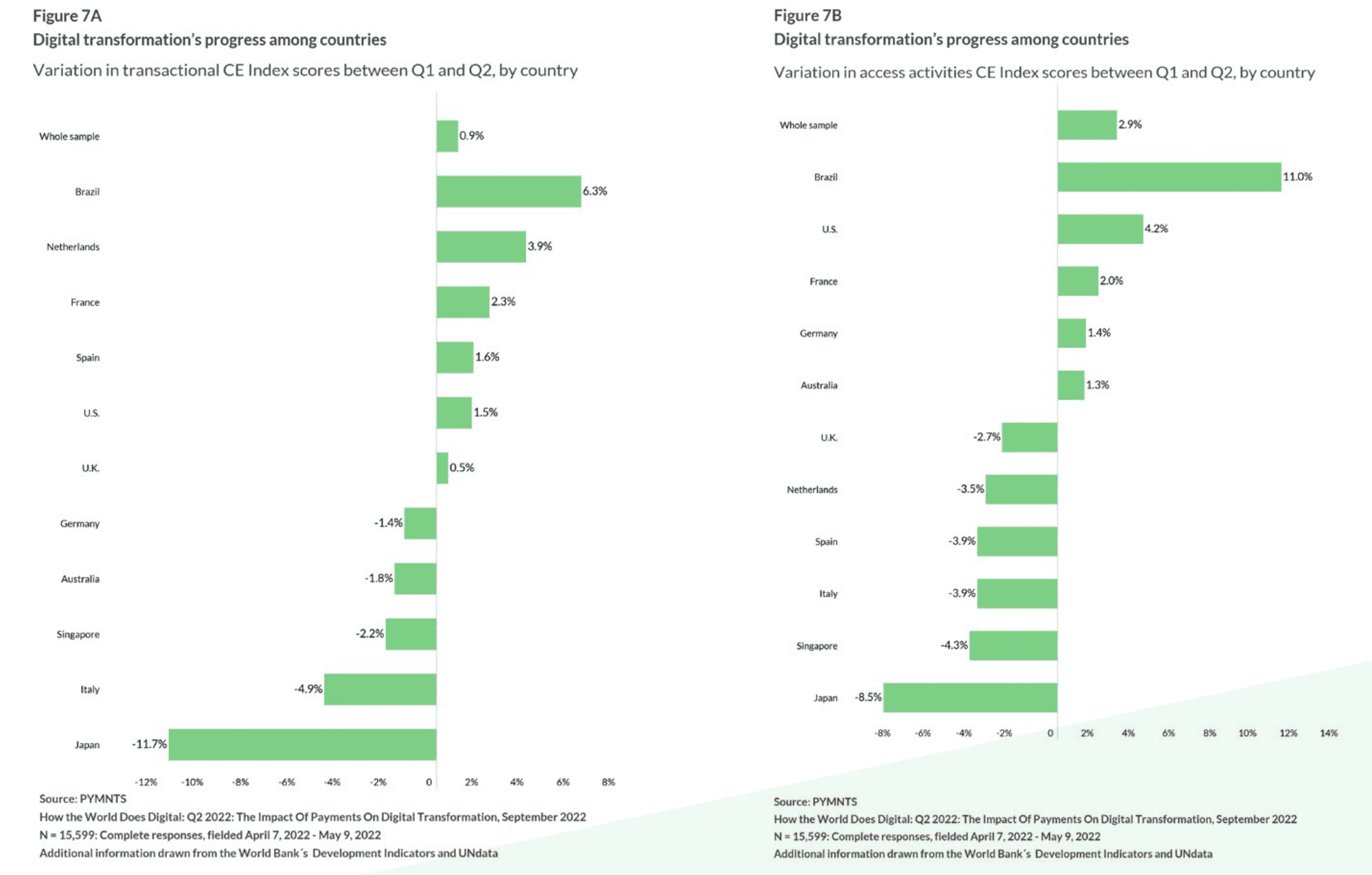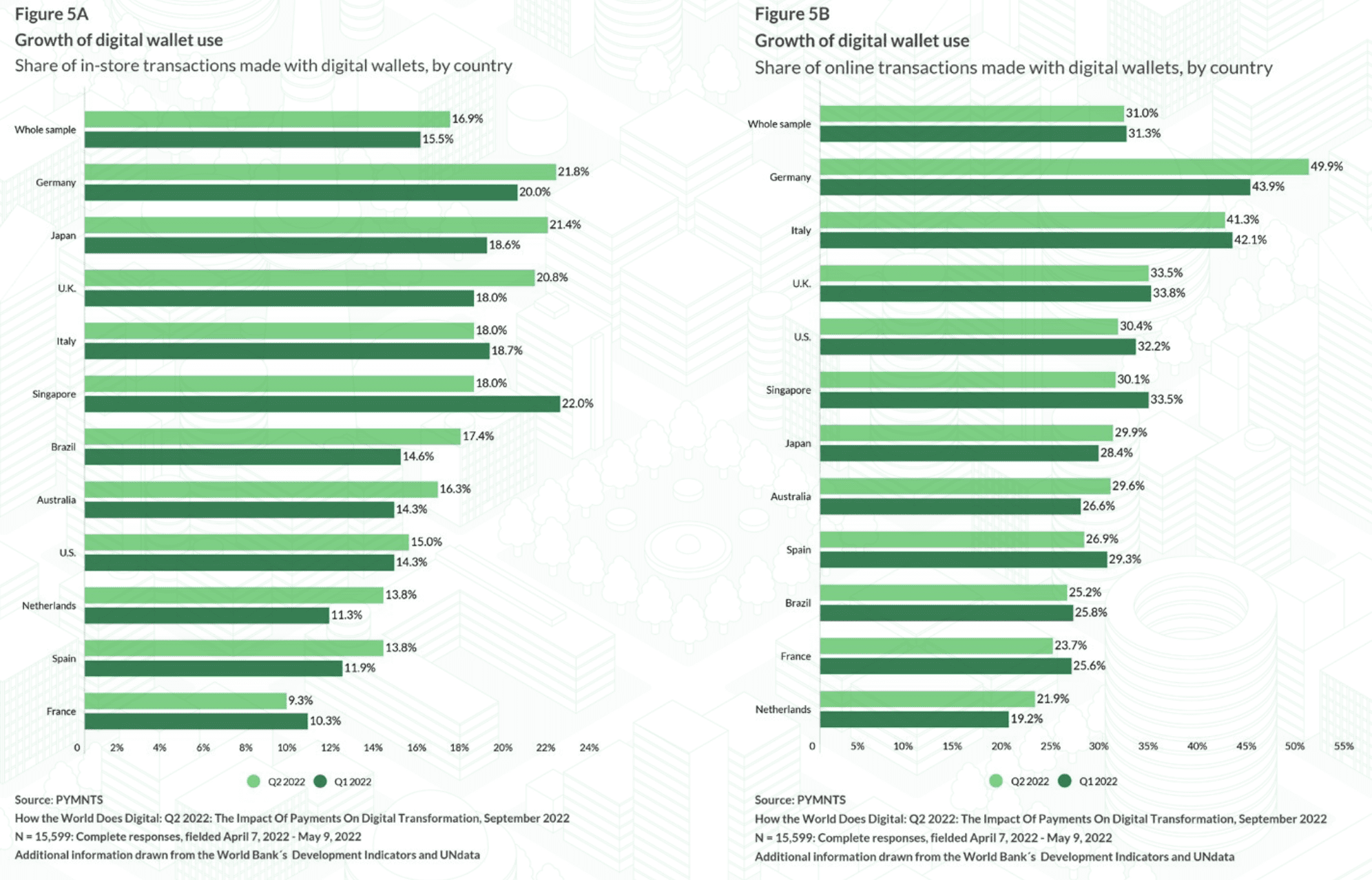Over 90% Smartphone Penetration Creates Different Results in Spain, Italy

Despite topping the PYMNTS ranking for smartphone ownership, the state of digital transformation in Italy and Spain diverges significantly.
Drawing on data collected from over 15,000 consumers across 11 countries between April and May 2022, a recent PYMNTS report, “How The World Does Digital: The Impact Of Payments On Digital Transformation,” found that the two Southern European countries reported the highest smartphone ownership of all: 90.1% and 93.2% ownership in Italy and Spain, respectively.

The report also calculated a ConnectedEconomy™ Index (CE Index) for each country surveyed. The score measures digital transformation defined as the number of people who use digital methods to engage in any activity, the number of digital activities in which they engage and how frequently they engage. The CE Index is calculated by collecting information about people’s engagement with 37 routine digital activities.
While the most recent connected economy survey ranked Spain the highest in Europe in terms of digital transformation, with a CE Index of 31.8, Italy’s high smartphone penetration does not translate into the same high level of digital engagement.
In fact, Italy ranked the lowest of all European countries in the survey, and was the second lowest globally after Japan.
Learn more: Benchmarking the EU’s Digital Engagement: Italy
Digging a little deeper into the data reveals that while both countries’ scores fell between the first and second quarters of 2022, the decline was most pronounced in Italy, which experienced a 5.2% decrease in its CE Index compared to just a 1.9% decrease in Spain.

The connected economy methodology distinguishes between transactional and non-transactional digital activities.
Here, the data shows that while both countries witnessed a 3.9% decline in CE Index across non-transactional activities, looking at transactional ones, Spain experienced a 1.6% increase while Italy saw a 4.9% decrease.

The divergence in transactional CE Indexes suggests that while Spain has managed to maintain the momentum of pandemic-era digitization of payments, in Q2 2022, Italians began to fall back on pre-pandemic payment norms.
As evidence of Italy’s slowing digital payments growth, the share of both online and in-store payments made with a digital wallet declined quarter-on-quarter (QoQ).

In Spain on the other hand, the share of in-store transactions made with a digital wallet increased from 11.9% to 13.8%. For online purchases, the share decreased from 29.3% to 26.9%.
See also: Benchmarking the EU’s Digital Engagement: Spain
Italy’s lower digital wallet usage could be put down to the fact that the country already had a high preference for the payment method compared to other countries. In the first half of 2022, only Germany reported a higher share of online purchases made with digital wallets, a figure which increased from 43.9% to 49.9% QoQ.
Related: Italy’s Digital Wallets Strive for Interoperability, Stronger Pan-EU Payments Integration
For in-store purchases, Germany and Italy also show a strong inclination toward digital wallet payments, although they were both overtaken by Singapore in Q2 2022.
Explaining the Spain-Italy Divergence
As PYMNTS has previously reported, a low level of digital engagement among older consumers drags down a country’s CE Index even if its Gen Z and millennial consumers are highly engaged with digital technologies.
Read more: Europe’s Digital Transformation Slowed by Lack of Engagement From Older Generations
In Italy, a generally older population and low levels of engagement among those over the age of 42 combine to create a lower CE Index than in Spain, where a third of the population surveyed were Gen Z or millennials and there is a more even distribution of engagement among generations.
Italy’s comparatively low CE Index but high smartphone penetration suggests that while most older Italians have smartphones, the range of activities that they use them for is limited.
This observation reflects findings by media scholars who have characterized older Italian smartphone users as using their devices only for a limited amount of time and mainly for personal communication.
For all PYMNTS EMEA coverage, subscribe to the daily EMEA Newsletter.